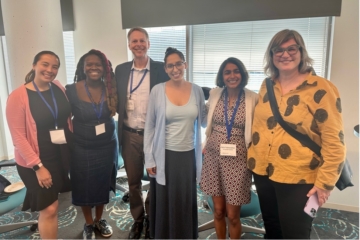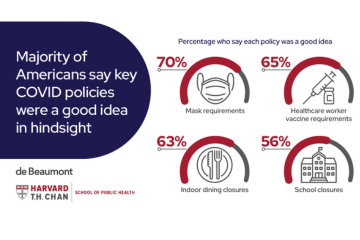
However, as we monitor progress, evaluate the impact of programs, and design interventions, we need to be mindful that we are operating in a system that was not designed to give everyone what they need; in fact, much of it was intentionally designed to withhold necessities from certain communities. Many of the institutions and systems that we view as innocuous were built on a legacy of anti-Blackness, cultural imperialism, oppression, and a hoarding of power and resources.
Course correction is long overdue, and the public health community has an incredible opportunity to revamp the systems that aren’t serving us to advance health equity. Here are five key actions to take when promoting health equity:
1. Critically reflect on how policies, institutions, and systems were created to maintain and uphold White dominant culture.
You may have seen recent social media posts highlighting differences in how dermatological conditions present in patients with different skin tones. Unfortunately, most medical professionals are trained only to detect conditions on white skin, which can result in misdiagnosis and inadequate care that leads to disproportionate adverse outcomes. This is an example of how the systems, structures, norms, and standard tools we have in health are often developed to support middle to upper-income White populations.
To advance health equity, we must actively work to identify populations that are not adequately captured with existing systems and structures, fill gaps with missing information, and rigorously assess whether evidence based on a specific population is applicable to the population you plan to serve. Consider incorporating qualitative work as a default in your public health approach to capture relationships and nuances that aren’t explained by quantitative data alone. It’s our job to integrate this information into our approach and go beyond what we see on the surface.
2. Intentionally develop meaningful power-sharing partnerships with communities experiencing the most inequities.
The communities we serve are experts in their experiences. They have been living with the impacts of systemic racism and historical disempowerment, know the gaps in current practice, and live in a reality that doesn’t wait for a change in administration. Developing respectful power-sharing relationships with communities is essential to progress. If you are in a position of identifying health challenges, directing resources, selecting programs and who they benefit, and evaluating outcomes, remember that you have the power. Sharing power can mean shifting power to communities to ensure they can make decisions about efforts that affect them and facilitating their ability to do so. Wisdom and lived expertise are valuable – build in the same compensation structure, or greater, that you would for any other expert consultation.
3. Center action on the most structurally and historically disempowered and those who are most vulnerable to adverse impacts.
Productive conversations often break down when debating resource allocation and investment. Centering actions on the most structurally and historically disempowered, and those who are most vulnerable to adverse impacts, will benefit everyone, and can often be achieved with low-effort, harm reduction approaches. As such, centering racial justice is necessary to any intervention that advances health equity. The goal is not to help populations survive or to simply reduce health disparities; we should aspire to remove long-standing challenges that have prevented communities from thriving. We are seeing examples of this with the adoption of programs such as Healthy School Meals for All and improved access to birthing doulas.
4. Be observant and cautious of performative equity.
Health equity should not be added at the end of a manuscript to better position it for publication or named in a policy intervention to make it more appealing to legislators. It is a thoughtful, evidence- and community-informed, strategic act that is led by the people most impacted by inequities and guided by those trained in racial justice and health equity. It is collaborative, open, and dynamic, with egos left at the door. It builds movements, starts good trouble, and transforms.
5. Recognize and embrace discomfort with the unknown, and break free from the notion of perfectionism in carrying out this work.
While the study of racial disparities in health is not new and includes such works as W.E.B. Du Bois’ The Philadelphia Negro: A Social Study (1899), conceptualizing and operationalizing a just society involves innovation and embracing what may seem impossible. As such, we must not allow discomfort with the unknown to stifle novel approaches and examinations. Learning from what hasn’t worked and building on the expansive knowledge base that exists from activists, Black Feminists, Native communities, immigration experts, interdisciplinary researchers, public health professionals, scholars, and other key partners is necessary to forge the path towards true equity, social change, and liberation.
This blog post was authored by Ashley Hickson, DrPH, MPH, Senior Health Equity Advisor, Center for Science in the Public Interest; and Jaimie Shaff, DrPH, MPA, MPH, Johns Hopkins Bloomberg School of Public Health. Both are 2021 honorees of de Beaumont’s 40 Under 40 in Public Health.




